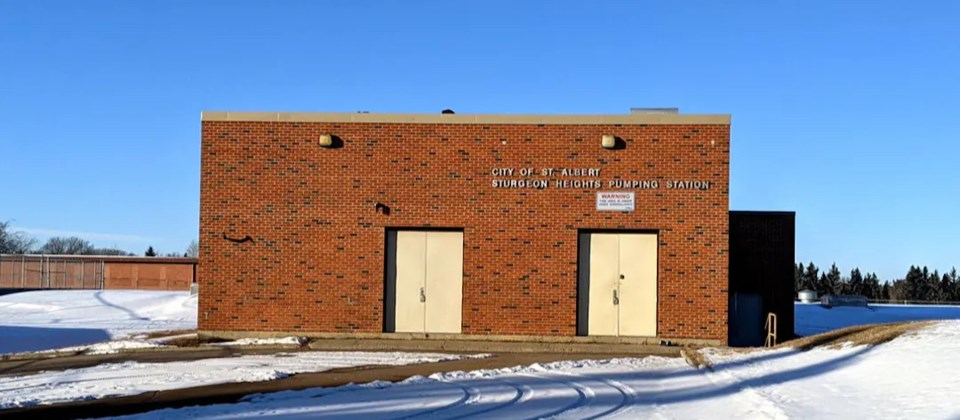St. Albert city council unanimously granted a water project an exemption to the city's own sustainable building policy on April 18, after city staff recently noticed the project's design potentially wasn't up-to-code environmentally.
Despite the $33 million budget, the Sturgeon Heights Reservoir and Pump Station replacement project, which is already under construction, would need an estimated maximum of $1 million in additional funding if it were to be green certified as all new municipal buildings must be under the city's Sustainable Buildings Policy.
The policy requires all new municipal buildings larger than 500 square metres must obtain third-party green certification through programs such as the Leadership in Energy and Environmental Design (LEED) Rating System, which is used world-wide and administered in Canada by the Canada Green Building Council.
The discrepancy between the policy, which was implemented in 2017, and the design of the reservoir and pump station, which was completed in 2017, was discovered by administration during a recent design review, Regan Lefebvre wrote in a report.
The new reservoir and pump station, which is replacing the oldest of the three facilities that deliver drinking water throughout the city, was designed with sustainability in mind, although more would need to be incorporated to ensure certification was obtained, Lefebvre wrote. Currently the project's design includes LED lighting throughout, an energy efficient tank-less water heater, and energy efficient pumps, according to the backgrounder.
Depending on what space is included in the calculation, the new pump station is either 2 per cent, 8 per cent, or 11,500 per cent larger than 500 square metres, Lefebvre said.
The $1 million estimate however, Lefebvre wrote, also includes additional costs that could be incurred if the project was delayed in order to obtain the certification, as well as about $50,000 for the actual certification, meaning the design wouldn't have necessarily needed $1 million in green-specific updates.
In an interview, Coun. Mike Killick explained he felt granting an exemption was warranted for the sake of feasibility, and because the pump station would see limited visitors on a day-to-day basis.
“When I looked at the pump station building it seems to fall outside of where you would normally apply those kind of guidelines, which would be a fire hall or an administrative building where there's people working in it and they want to make sure they have energy efficient windows and insulation (and) all of those factors,” Killick said.
“It's kind of like a mechanical room in its simplest form,” Killick said of the pump station, adding, “so I don't see that we would need to apply those pretty strict rules to essentially a big mechanical room.”
“Getting it certified for something that would really not be a major improvement for the city doesn't make sense to me at this stage.”
Likewise, Coun. Ken MacKay said he also support administration's exemption request for the purpose of feasibility.
“I think this was a situation where circumstances and policy led to this unfortunate situation,” MacKay said.
City staff will be bringing forward an updated Sustainable Buildings Policy for council's consideration prior to year's end, with one possible update being a permanent exemption for new utility buildings, said Lefebvre's report.
MacKay said he'll be interested in hearing which other planned utility projects may also require an exemption to the policy or how a policy change would effect the planned projects.
As part of the 2023 budget, the city set aside $1.9 million to purchase land for a future water reservoir in the city's north end. This future reservoir is expected to be designed and built between 2036 and 2040.




